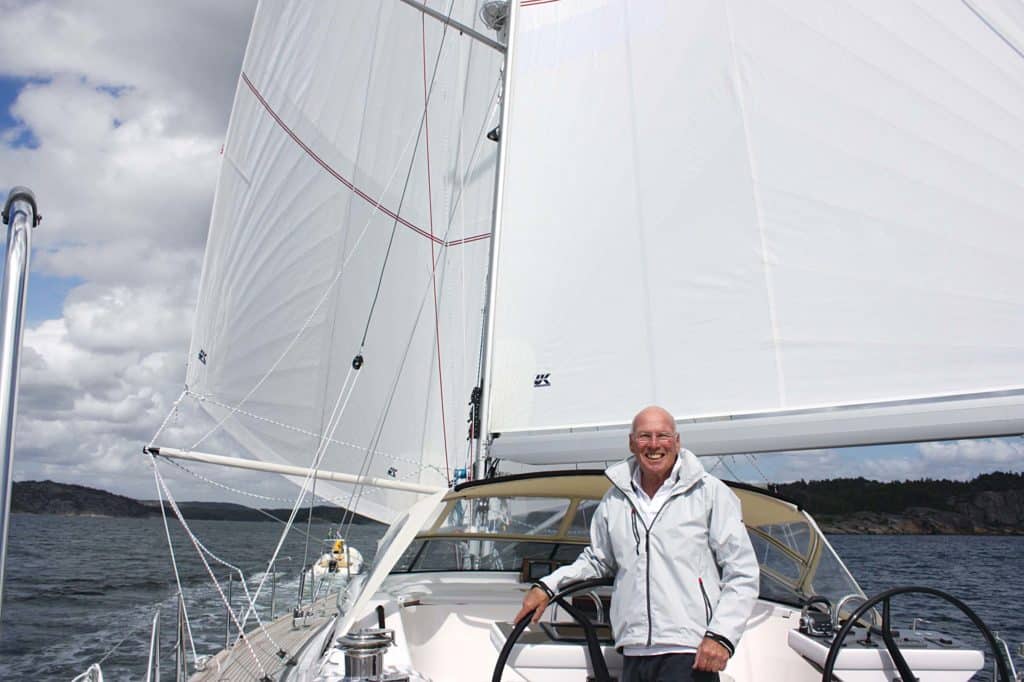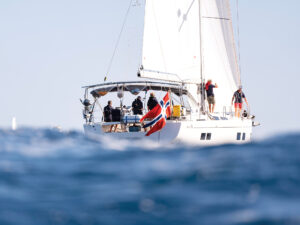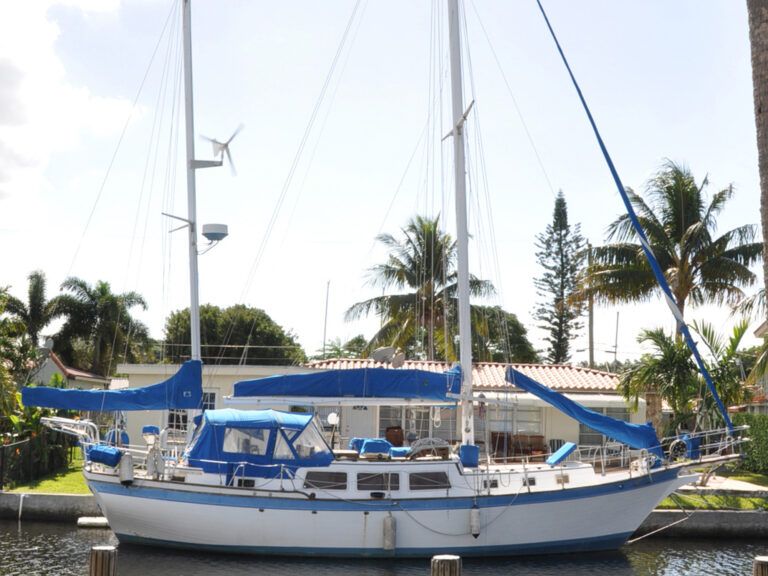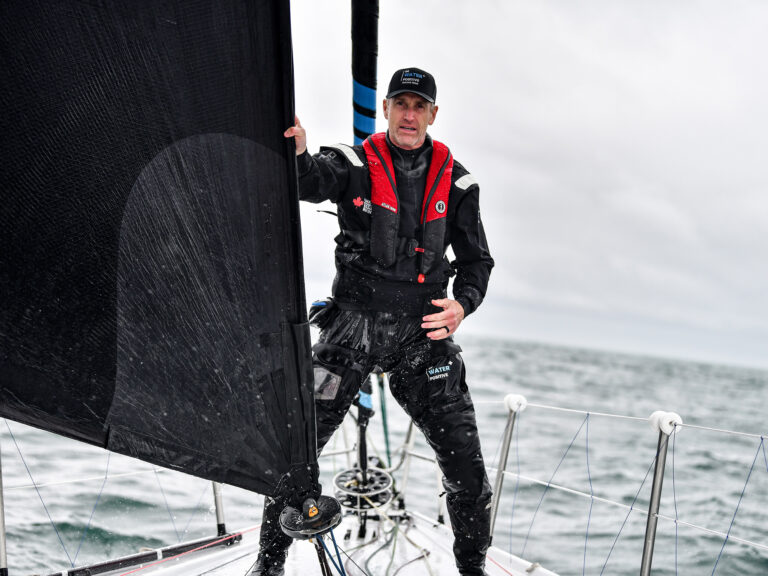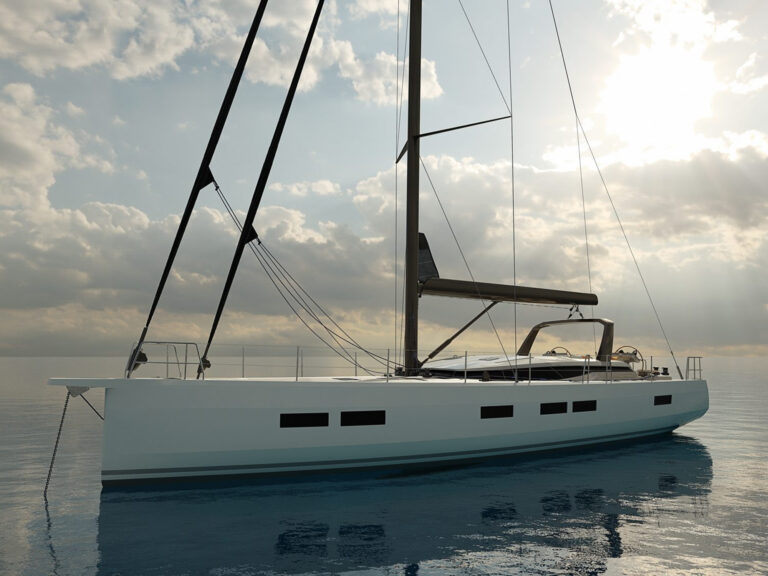When it comes to downwind passages in open seas in less than ideal weather, the last thing on most cruising sailors’ minds is flying the spinnaker, especially at night. There is, however, a simple and easily handled alternative of particular relevance to shorthanded crews: I call it the “Simbo” rig, short for “simple bow” rig.
All it takes are two identical working jibs with higher-cut clews, set on a twin-grooved furling headstay and hoisted aloft on a single halyard. Each sail has its own pair of jib sheets and own set of fairleads on deck. Once set and sailing on a reach or close hauled, one jib rides on the other without any noticeable additional wear compared to sailing with a solo jib. On a run, the inner sail can be winched to weather and the jibs are flown wing and wing.
When bearing away to a run with this Simbo rig, furl the twin jibs and raise the pair of whisker poles (each loaded with both sails’ port and starboard sheets respectively). Each pole should have its own topping lift and fore and aft guys. Once they are raised — level with the horizon and at 90 degrees off the bow — no further adjustment of the poles is required. With the jib sheets led through the jaws of the whisker poles, you can return to the cockpit and unfurl the jibs out to their respective whisker poles with the outer running sheets; this leaves each sail’s lazy reaching sheets to cross over the foredeck and back to the cockpit via the other whisker pole.
The whisker poles should measure just half the length of the foot of the jib, taken from tack to clew. Ideally, the eased mainsail boom should be sheeted some 45 degrees forward of the stern so that it does not directly oppose the pressure on the mast from the weather whisker pole, which is always set at 90 degrees perpendicular to the bow.
Once the sails are set for a downwind run, the wind flows into the mainsail, on around the mast into the weather jib, and is then deflected into the leeward jib (that would otherwise have been blanketed by the mainsail). When jibing, overhaul the mainsheet and jibe the mainsail as you normally would. Everything else — the jib sheets, the separated twin jibs, the whisker poles and guys — remains in place.
When hardening up to a reach where a singular jib would normally be flown poled out, simply release the windward sail and it will fly across to lie on the working jib; the slack sheets can then be taken in. On our boat, we’ve found the sails can be flown wing and wing with the wind from about 150 to 180 degrees off the bow.
In a rising wind, unlike with the spinnaker, the twin jibs can be partially furled or reefed, or completely struck. One person can control the Simbo rig entirely from the cockpit in all weather conditions. The only time it’s necessary to go forward is to raise or lower the whisker poles.
When coming onto a reach with our boat, we’ve found that the whisker poles can remain set until the apparent wind angle is 60 degrees off the bow. On hardening up further, you release the leeward jib sheets from the pole and stow the spar. Subsequently you can release the two weather jib sheets at leisure and stow that pole.
If you haven’t found it necessary to stow the poles, on bearing away again to a run, you release the upwind sheet of the two sails and haul the inner sail across the foredeck to return to the Simbo rig.
Of course, sailors have flown twin headsails alone when sailing downwind for eons but always at the expense of a struck mainsail; this is avoided with the Simbo rig. A final point is that with two headsails flying on opposing spinnaker poles and no mainsail set, the yacht will roll considerably downwind with the inherent risk of dipping a pole into the sea. Having the main set and drawing helps dampen any roll.
With the Simbo rig, the working sail plan is always at the ready to meet changing circumstances. One watchkeeper from the safety of the cockpit can jibe or tack, adjust the sails for reaching or running, without calling up the off-watch crew. The only time you need to go on the foredeck is to raise or strike the whisker poles. The Simbo rig can confidently be flown downwind in gale-force conditions in the knowledge that it can easily be reefed or struck from the security of the cockpit.
To sum up, the Simbo rig comprises one suit of working sails that will meet all likely requirements when passagemaking, overcoming the need for additional crew on longer hauls, and at a fraction of the cost of spinnakers and related hardware. It’s really plain sailing.
Simbo Rig Sailhandling Tips
On a reach, you can ease sails under load by first resetting the unloaded downwind jib sheet to then allow it to capture the loaded upwind jib without having to carefully control the release of the loaded upwind sheet.
You can also adjust the sheet fairlead cars under load by resting the upwind jib on the downwind jib to take the load off its car. Then, after adjusting the car and tightening the sheet to take over the pressure, do the same with the then unloaded downwind jib sheet car. Using the same technique, you can rerun the sheets from outside to inside the shrouds (if you have an inboard fairlead track) for a closer sheeting angle.
Finally, on heaving-to, one can sheet both jibs hard in on their respective sides. Should the boat inadvertently tack through the wind, it will lay hove-to with the jib backed on the other tack.
If you need to tack, release the upwind leeward sheet before the tack to rest the sail on the downwind jib; this leaves just the downwind jib sheet to be released when tacking through the wind. On coming about, first take up on the new downwind leeward sheet/jib, which will also bring in the upwind jib. After belaying the downwind leeward sheet, you can then make up the captured upwind jib/sheet at your leisure.
This article first appeared in the December 2014 issue of Cruising World. Over the last 13 years Iain Simpson, with his wife, Jan, has employed the Simbo rig on six trans-Atlantic crossings and over 30,000 nautical miles on a series of Swedish-built Najad yachts. He’s been sailing for over 60 years, beginning in 1950 aboard his father’s Camper & Nicholson cutter, Patna. For more on his voyages, visit his website.
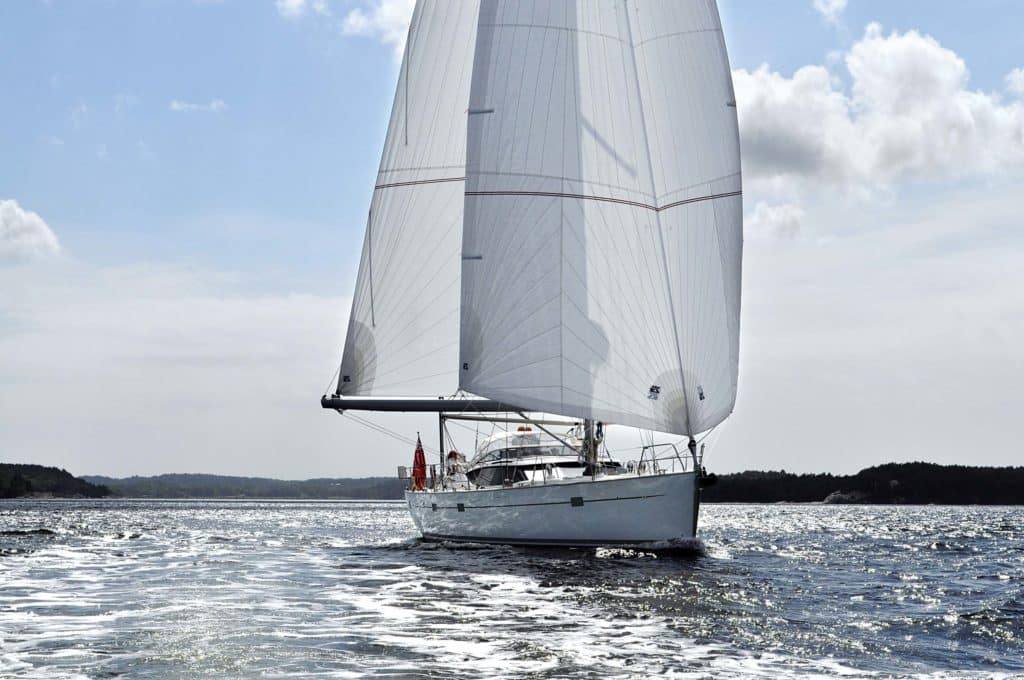
Simbo rig with two jibs
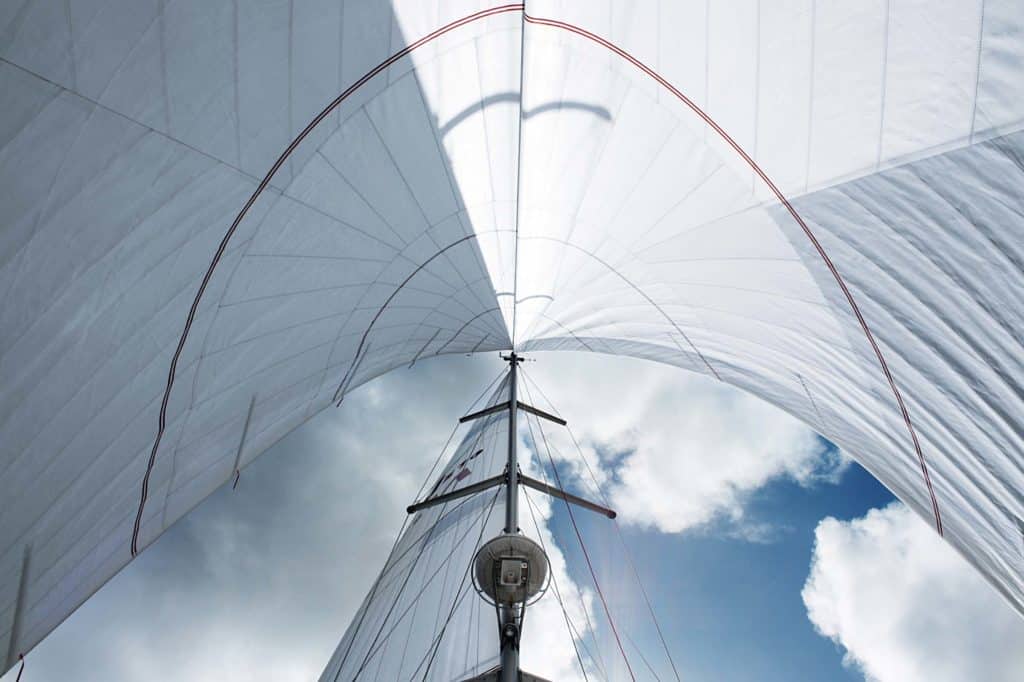
Sailing Downwind with Twin Headsails
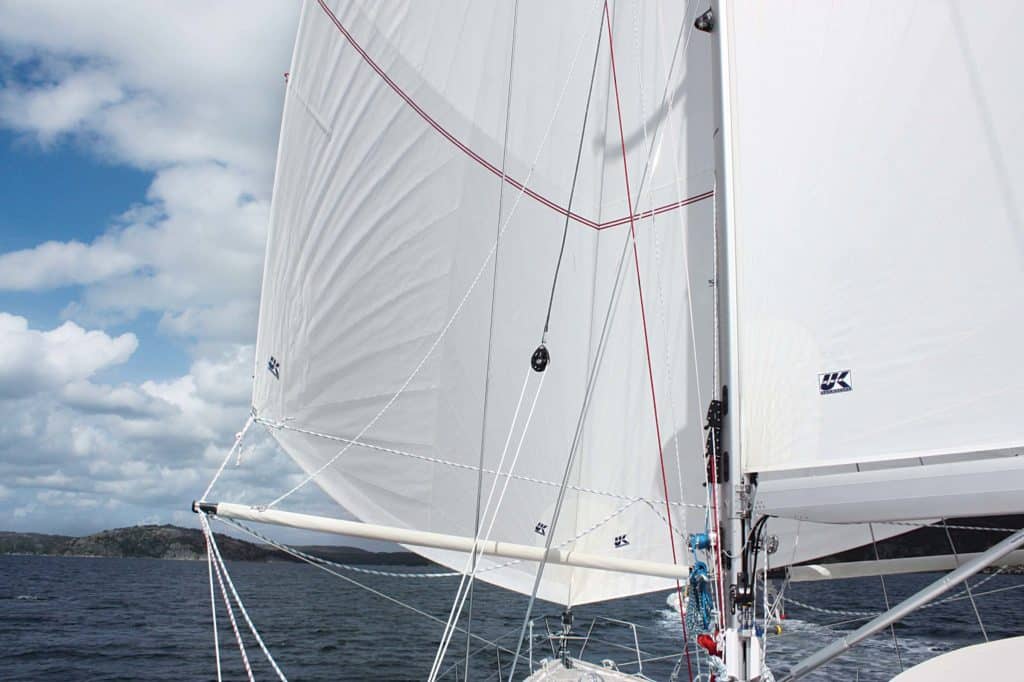
Sailing on a reach with whisker pole
